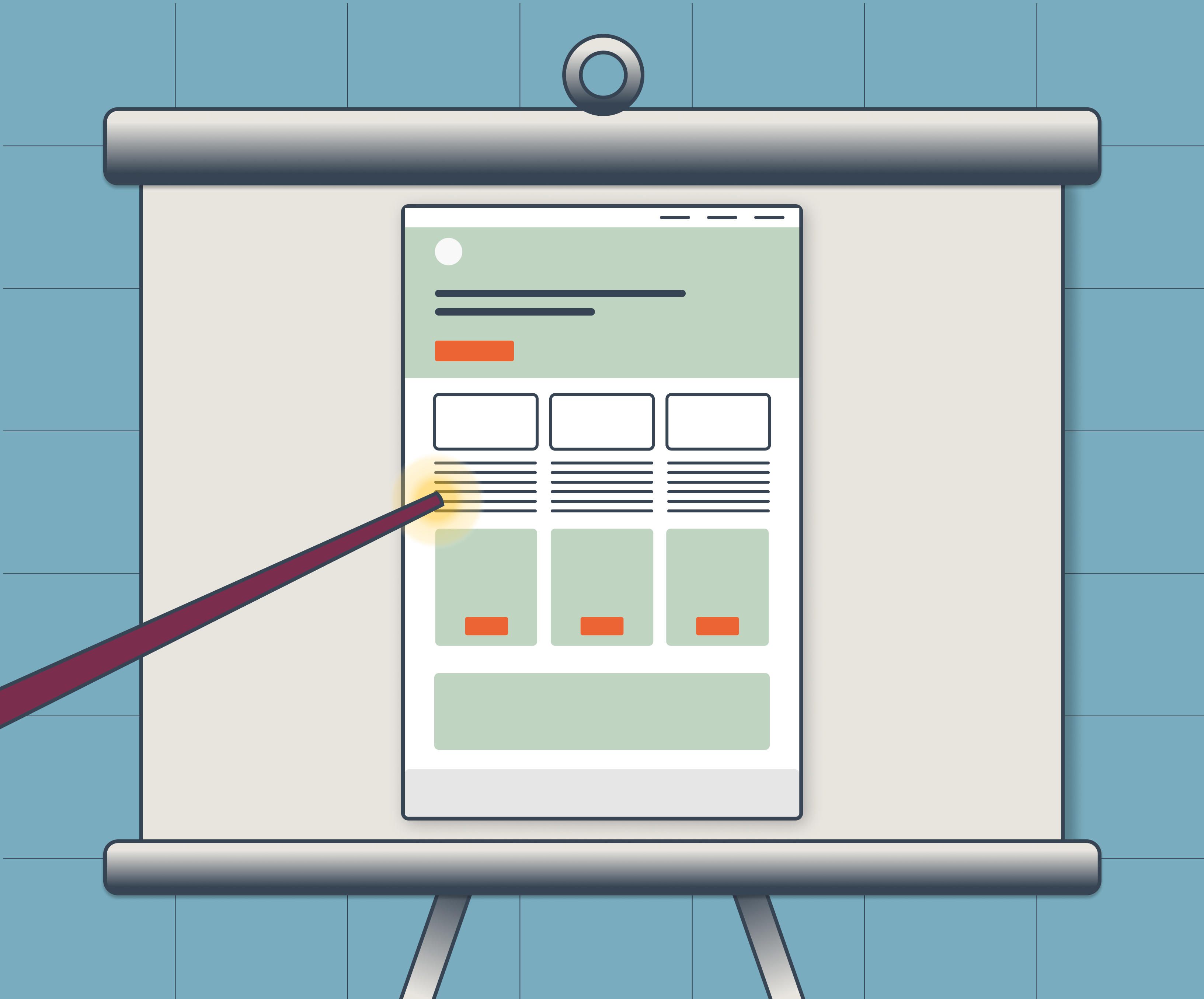
As designers, we invest significant time in completing research, synthesizing, and creating wireframes that capture our findings. However, distilling this information into an easily digestible format for stakeholders can be a challenge. It’s important to present our design decisions in a way that encourages constructive feedback and keeps the project moving forward. Here are some tips for presenting designs and gathering valuable feedback.
Presenting
Lead with the goal
At the start of the design review, clearly state the most important business goal or problem being solved. One thing that can be especially helpful is writing the goal at the top of the design as a grounding point for the rest of the discussion. Then, describe how the elements of the design meet those needs or solve the problem. This puts an emphasis on the underlying business needs instead of first focusing on the visual design. As you move through the design, keep tying in every design decision to the goal.
Start with what’s most important
When we scan web pages, we often use the F-Pattern or Z-Pattern, where the eye scans horizontally across the top of the page and then down. Due to this, a first response when presenting designs might be to start at the top and move your way down the design. It’s more effective to lead with the most crucial elements of the design, and order your presentation to highlight key features first. The most impactful aspects should receive attention right from the start.
Keep It High-Level
Rather than diving into every iteration and variation of your design, present the core concept first. Keep additional iterations as backup for discussion if stakeholders express interest in exploring alternative ideas or want to see more details of the process to arrive here. This approach keeps the focus on the primary design and prevents overwhelming your audience with too much information at once.
Justify Your Choices
Be prepared to articulate the reasoning behind every design element. Before presenting, review your design and jot down key rationales for decisions made. This not only strengthens your presentation but also builds confidence among stakeholders in your expertise.
Gathering Feedback
Describe what helpful feedback looks like
When providing feedback, it’s common for people to think through the lens of solutions. To prevent focusing on solutions, at the start of a project, it can be helpful to explain what helpful feedback looks like, and then reinforce this throughout the project. Helpful feedback:
- Describes the Problem: Encourage stakeholders to articulate specific challenges, keeping the focus on the challenge or issue.
- Aligns with Business Goals: Feedback should relate to how well the design supports the overall business objectives.
- Avoids Solutions: Guide discussions to stay centered on problems rather than immediate fixes.
Cultivating this mindset will promote thoughtful feedback throughout the project.
Keep asking questions
If solutions are proposed or if you’re unable to identify the root of a problem, dig deeper by asking clarifying questions. Aim to uncover the underlying concerns, such as:
- Is an element not aligning with business needs?
- Is there incorrect information?
- Describe more specifically what issue you’re encountering?
Encourage a deeper exploration of the problems at hand rather than jumping to fixes.
Where does the client’s attention focus
After each presentation or meeting, take note of the patterns in stakeholder feedback. What issues do they raise most often? Do they prefer high-level overviews or detailed discussions? This insight can guide your approach in future interactions.
Stakeholders have to go through the process themselves
Recognize that the design process can be complex. Stakeholders may need time to digest the information and think aloud during discussions. They often arrive at similar conclusions, but may require going through a similar mental process as we did. Many times, this is just part of the process and can’t be circumnavigated, especially with more complex features. However, it could be helpful to send designs in advance, along with a video explanation or have all of the previous iterations laid out in a separate area to review and talk through as needed.
Wrapping it up
By integrating these strategies into your design presentation and feedback process, you can foster a more collaborative and effective environment. Not only will this help in articulating your design decisions, but it will also empower stakeholders to engage meaningfully in the discussion. Remember, keeping the primary business goals at the forefront of your design ensures that you remain focused on solving the right problems.
Loved the article? Hated it? Didn’t even read it?
We’d love to hear from you.




